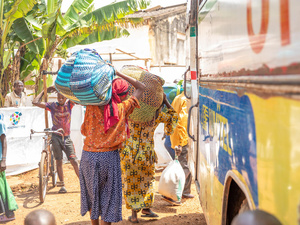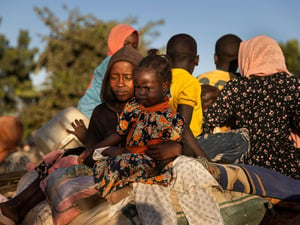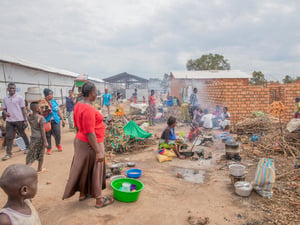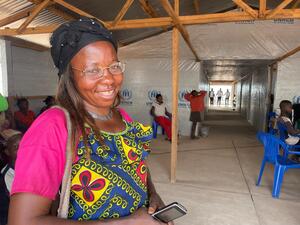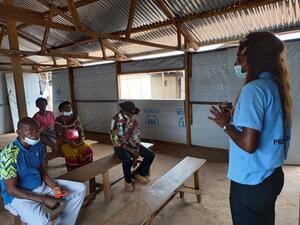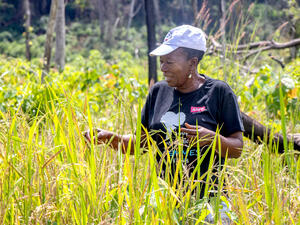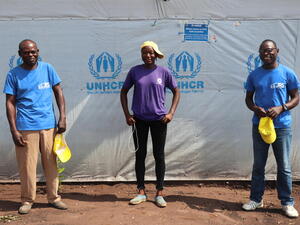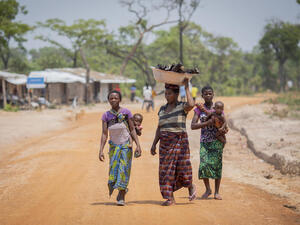UNHCR intensifies efforts to cope with Angolan returns
UNHCR intensifies efforts to cope with Angolan returns
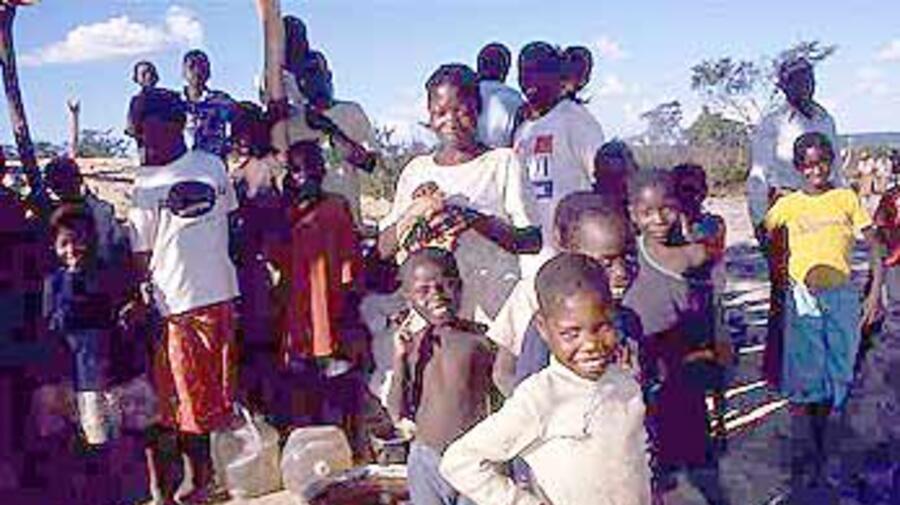
Some 4,500 Angolan refugees from Zambia's Mayukwayukwa camp have gone home since the cease-fire agreement was signed in April.
LUANDA, Angola, July 30 (UNHCR) - With more Angolan refugees going home from neighbouring countries in recent days, UNHCR is intensifying efforts to monitor and cope with the inflow.
Since the beginning of the year, nearly 8,000 Angolans have returned home from the Democratic Republic of the Congo (DRC), joined by another 4,500 from Zambia. These figures are based on returnees who reported to UNHCR on their departure; unrecorded spontaneous returns could push the number much higher.
From the DRC, recent returnees have left the forested border areas of Bas-Congo, Bandundu and Katanga provinces, and headed for neighbouring Zaïre, Uíge and Lunda Norte provinces in Angola. But most Angolans in the DRC prefer to wait for the UNHCR-assisted voluntary repatriation programme, expected to start in 2003.
From Zambia, returnees have come from Meheba and Mayukwayukwa refugee settlements. Local authorities say at least another 6,000 Angolans have left this year from villages in the same areas.
In Angola itself, UNHCR has been deploying staff and resources in areas of return with the limited funds available. In recent months, the UN refugee agency has increased its monitoring capacity at the borders and in the four identified main provinces of return - Moxico, Uíge, Zaïre and Cuando Cubango.
Moxico province is believed to have received the largest number of spontaneous returns so far. Authorities in provincial capital Luena reported some 14,800 returnees in Luau, at the border with the DRC. Another 6,500 returnees, mainly from Zambia, could have arrived in and around Cazombo, also in Moxico province. Cazombo is not accessible by road because of landmines and numerous destroyed bridges.
Initial assessments in other provinces reported at least 518 returnees in Uíge province's Maquela de Zombo and 886 returnees in Zaïre province's Mbanza Congo. Small numbers continue arriving from the DRC through two main entry points.
Since July 2000, UNHCR has run a programme for internally displaced persons in Uíge and Zaïre, heavily-damaged areas with minimal infrastructure. Three non-governmental organisations (NGOs) funded by the refugee agency are currently providing material and medical assistance to returnees in Maquela de Zombo in Uíge province.
UNHCR has also set aside half a million dollars out of an estimated $1.87 million initial budget presented to donors for Angolan returnees this year. This money has allowed the agency's staff from Luanda and Uíge to send missions to possible areas of return. It has also enabled the deployment of one truck and 1,500 jerry cans to Cazombo, one light vehicle to Luena and satellite telephones to both cities.
UNHCR plans to open some field offices in Moxico province by the end of August. It also hopes that by then, NGOs would have started assistance activities on its behalf in Moxico.
Twenty-seven years of civil war have driven hundreds of thousands of Angolans into the region. Currently, there are some 470,000 Angolan refugees hosted mainly in the DRC, Zambia and Namibia. There are also an estimated 4 million internally displaced persons (IDPs) in Angola.
Many of these refugees and IDPs started returning home after the death of Jonas Savimbi, leader of the National Union for the Total Independence of Angola (UNITA), in February and the subsequent cease-fire agreement between UNITA and the Angolan government in early April.
However, Angola is still ill equipped to absorb its returnees. It suffers from severe food shortage and malnutrition, and lacks basic infrastructure such as potable water, sanitation, shelter, health and education facilities. Many areas of return are inaccessible due to landmines, destroyed roads and bridges.

